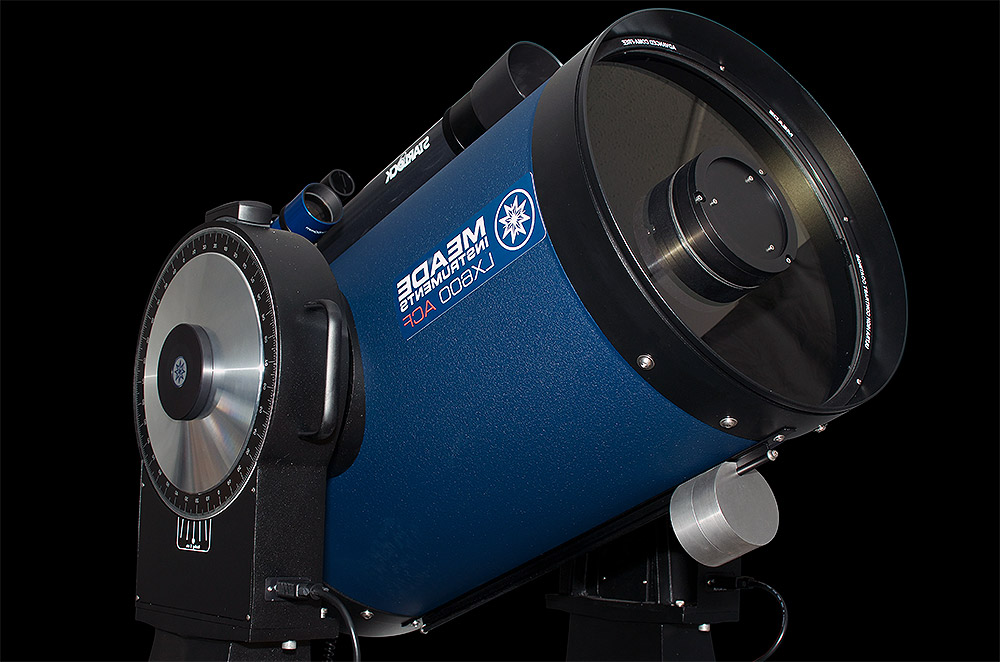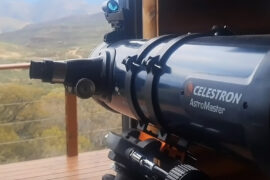Schmidt-Cassegrain telescopes (or SCT for short) are one of the lesser-known types of telescopes in the market and yet, they have many advantages over their counterparts. In this article, we are going to take a look at the pros and cons of Schmidt-Cassegrains so you can decide if one would be a good fit for you.
If you are in a hurry, let me summarize things:
The main advantage of Schmidt-Cassegrains is that their design combines the best parts about refractors with the best parts about Newtonians. On the other hand, its main disadvantages are a higher price and a limited field of view.
In order to better understand the conclusions and comparisons we are going to make, let’s talk about the design.
What is a Schmidt-Cassegrain Telescope?
Schmidt-Cassegrains are a type of catadioptric telescope. This means that, unlike refractor telescopes that use only lenses, or Newtonian telescopes that use only mirrors, it combines the best of both worlds. This allows SCTs to have better error correction and less chromatic aberrations, especially on the edges of the image where other types of telescopes tend to show them.
The design also allows them to have a “folded path of light”, which means that instead of the light traveling a straight path through the telescope’s tube, it bounces multiple times inside it. This allows SCTs to have a larger focal length on a very compact and light tube.
Schmidt-Cassegrains are very similar to Maksutov-Cassegrain telescopes, their more popular cousins, but the main difference is they add a Schmidt corrector plate, a special lens that allows SCTs to be manufactured in larger apertures than Maksutovs.
Are Schmidt-Casegrain Telescopes good?
Short answer: yes. Schmidt-Cassegrains are some of the best telescopes available in the market if you don’t mind the slightly higher price tag in comparison to Newtonians of similar aperture.
SCTs are powerful, have great optics, and are easy to travel with. They also fix some of the bigger optics-related drawbacks that simpler designs like Newtonians and refractors have.
While they also share some of the best benefits of refractors, they unfortunately also inherit the main drawback that comes with using larger lenses, and that is that their price scales very fast as the size of the lenses increases. Because of this, you will see a significant price jump above the 8″ (200mm) aperture range.
Schmidt-Cassegrain Pros
Extremely portable and compact
The design of SCTs “folds” the light’s path, allowing them to have shorter tubes than traditional designs while keeping the same aperture.
This reduces the weight and size of the telescope, making them a perfect choice to take on the field for a camping trip.
Even if you don’t want to take it into the field, it also makes it easier to set up on its tripod because it’s not as bulky. Transporting your telescope back and forth from its storage space into your viewing spot should always be a consideration, even if it is just in the backyard.
Optimal for planetary viewing
All telescopes are good for both planetary and deep space observing. That being said, some perform slightly better than others at certain tasks.
Catadioptric telescopes are slightly better than other types when it comes to watching planets and the Moon. This is because their design allows them to have longer focal lengths. This serves two purposes:
First, longer focal lengths capture better small details. The Moon and the planets are the types of objects where this feature is going to be useful as they are the kind of targets where you can distinguish their geology and atmospheric conditions.
Second, focal length results in a smaller field of view, which also lets you focus on single objects and appreciate them much better.
Easy to collimate
Collimating a telescope means re-aligning the mirrors so you can always get a correct image with no optical errors. Some types of telescopes such as reflectors (Newtonians and Dobsonians) need to be collimated every once in a while; others do not need to be collimated at all like refractors. SCTs do need to be collimated every few months.
This sounds like a daunting task, and while it can be a bit of a pain for reflectors telescopes, with SCTs it is a very simple process that anyone can do.
All you need to collimate a Schmidt-Cassegrain is to slightly adjust the screws that hold the secondary mirror. There’s no need to disassemble anything or use any special tools. All you need is a screwdriver and some trial and error. The whole thing can generally be done in less than 10 minutes.
Better optics, error correction, and no chromatic errors
The more sophisticated mirror and lens design used by Schmidt’s reducer optical errors when compared to reflector telescopes. It also fixes a lot of the chromatic issues other designs tend to show sometimes.
This effect is more noticeable in the outer edges of the image where the optical quality of the images starts to get worse in both the “live” view, but especially when you start to get into astrophotography and you take stills that you can analyze in detail.
Price
To be honest, I’m going to put price as a factor in both the pros and cons list. This is because the price is relative.
While SCTs are more expensive than Newtonians when comparing two devices with the same aperture, they are also cheaper than Maksutovs.
Schmidt-Cassegrain Cons
Requires collimation
Schmidt-Cassegrains are very similar to Maksutov-Cassegrains in many ways, but due to the additional corrector lens, they require some maintenance that Maksutov’s don’t. They need to be collimated, and they need to be collimated more often than reflectors.
On average, reflector telescopes need to be collimated once a year or once every two years. Schmidt-Cassegrains have to be collimated every six to eight months. Thankfully, as I mentioned in the pros section, it is much easier, but that also comes with a possible issue.
Because SCTs are so easy to collimate, some people end up overdoing it and try to adjust the alignment when the telescope doesn’t even need it. This may cause the screws to loosen up a bit. If that happens, they’ll need to be replaced, but replacement thumbscrews never end up fitting the telescope as well as the originals and the alignment might never be as precise.
Slightly worse for observing galaxies and deep space objects
If long focal lengths are better for planetary observing, does that mean they are worse for deep space objects? well, yes.
Longer focal lengths result in a narrower field of view, which are suboptimal for viewing galaxies and nebulas because they require a larger area to be fully appreciated.
Also, because of the larger paths light has to travel, a little bit of brightness and color is lost. These effects are not anything too significant. If you are a beginner, you wouldn’t even be able to tell the difference unless you were comparing two telescopes side by side, but if you are looking to optimize your viewing experience for certain types of objects, it’s something worth considering.
If you are looking for a telescope that performs better on deep space objects reflectors tend to have an edge, of course, assuming similar apertures and brand quality.
SCTs hit a manufacturing limit at a certain size
This will not be a problem for 99% of us mortals who don’t have tens of thousands of dollars to spend on a telescope, but Schmidt-Cassegrains have hit a manufacturing limit at an aperture of 400mm (16″).
This is because the corrector plate becomes too difficult to make past that size.
Again, this probably won’t affect most people as telescopes at in the 400mm aperture range cost as much as a car, but it’s a fun fact.
Price
When compared to Newtonian telescopes of equal aperture, SCTs are priced higher due to the lenses and the added complexity in manufacturing them.
While they do perform better and have other advantages like their size, is the difference enough to be worth the extra money? that really depends on every person’s individual circumstances. If you are planning to take advantage of the size to take it camping then the price might be definitely worth it for you. Same if you are the kind of person looking to get the maximum performance when looking at planets.
Summary
- Schmidt-Cassegrains offer great performance in a compact package
- Their combination of lenses and mirrors gives them the best of both refractors and reflectors
- On the other hand, they also require some maintenance and are generally more expensive
- They perform slightly better on planets and slightly worse on galaxies, nebulas and DSOs








